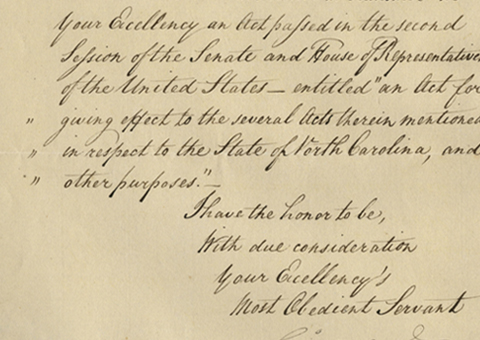Jacob Grimm, Mentioning His Brother By Name, Seeks Out Written Traditions From Around Europe For His Work On Law, For Which He was Renowned


A rare letter of Jacob connecting the Brothers Grimm, and showing him engaged in his work.
The Brothers Grimm, Wilhelm and Jacob, are best known for popularizing fairy tales that today are as popular as ever and that have permeated our society an ocean and two centuries away from their original work. Their tales includes Cinderella, Hansel and Gretel, Sleeping Beauty and Snow White. But the brothers were...
The Brothers Grimm, Wilhelm and Jacob, are best known for popularizing fairy tales that today are as popular as ever and that have permeated our society an ocean and two centuries away from their original work. Their tales includes Cinderella, Hansel and Gretel, Sleeping Beauty and Snow White. But the brothers were more than just story-tellers. They were academics, linguists, cultural researchers, lexicographers and authors.
The brothers believed in German national unity and used the unity of German folklore to draw the country together. They worked to discover and crystallize a kind of Germanness in the stories they collected because they believed that folklore contained kernels of ancient laws, mythologies and beliefs, crucial to understanding the essence of culture.
Jacob’s work as a jurist was influential for the development of the history of law, particularly in Northern Europe. The Deutsche Rechtsalterthümer (German Legal Antiquities, 1828) was a comprehensive compilation of sources of law from all Germanic languages, whose structure allowed an initial understanding of older German legal traditions. A later edition of this work came out in the 1850s. Grimm's “Weisthümer” (published in 4 volumes between 1840 and 1863), a compilation of partially oral legal traditions from rural Germany, looked at the development of written law in Northern Europe.
Autograph letter signed, no date, “Tuesday evening,” to an unnamed source, with whom he was exchanging works on rural and international legal traditions. The Rugianic he refers to is a reference to Rugen Island, off the Pomeranian coast in Germany.
”Dear Friend, In keeping with our agreement, I am enclosing the Norwegian laws. You have so many connections in Pomerania that it will be easy for you to procure a copy of the Rugianic Rustic Customs for me at your convenience, which I still don't have, ie, to procure a folio volume for the quarto.
"Wilhelm returned from Jena this evening; all dangers of illness seem to be overcome, but he is still very weak. Grete is said to have grown thinner and that it suits her well. Tuesday evening. Jacob Grimm."
Wilhelm was habitually ill and Grimm had a lifelong interest in law, so this letter is difficult to date. Wilhelm died of an infection in Berlin in 1859, and Jacob, deeply upset at his brother's death, became increasingly reclusive. Jacob died in 1863.

Frame, Display, Preserve
Each frame is custom constructed, using only proper museum archival materials. This includes:The finest frames, tailored to match the document you have chosen. These can period style, antiqued, gilded, wood, etc. Fabric mats, including silk and satin, as well as museum mat board with hand painted bevels. Attachment of the document to the matting to ensure its protection. This "hinging" is done according to archival standards. Protective "glass," or Tru Vue Optium Acrylic glazing, which is shatter resistant, 99% UV protective, and anti-reflective. You benefit from our decades of experience in designing and creating beautiful, compelling, and protective framed historical documents.
Learn more about our Framing Services








































































































